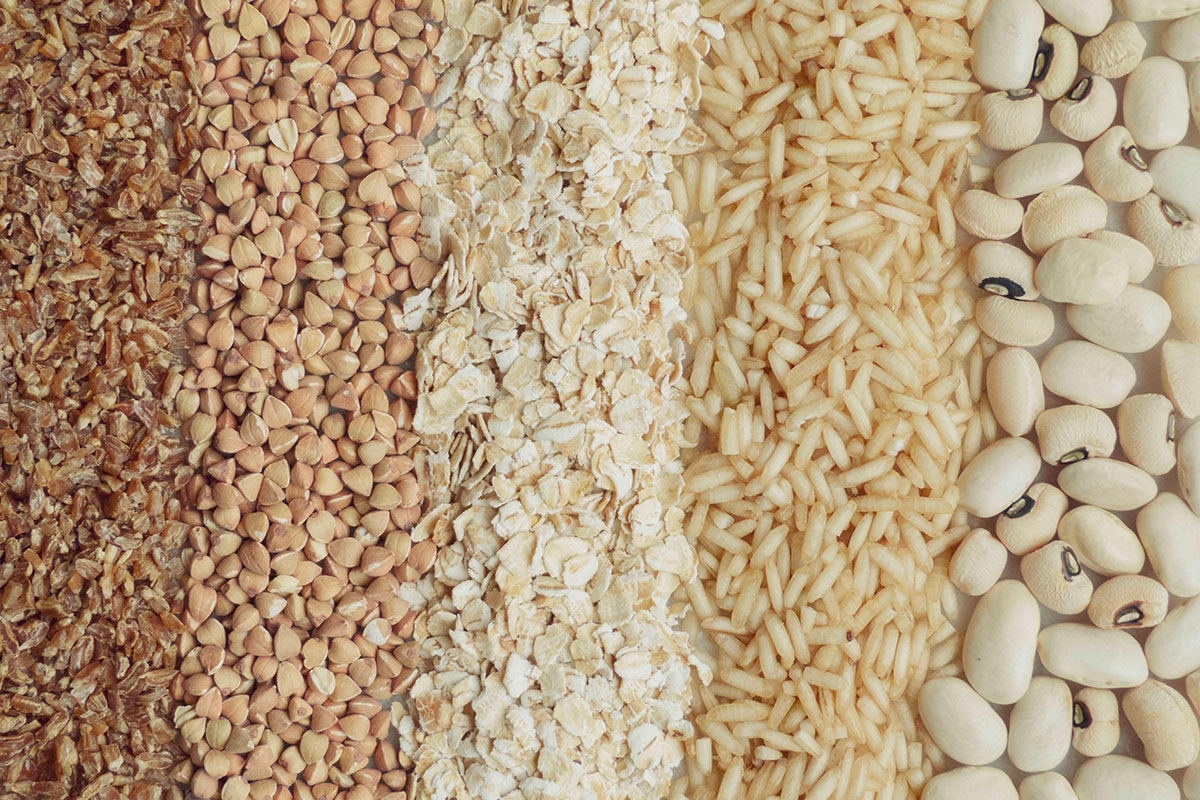Grains are a key part of any diet but, it is important to note that not all grains are the same. When cooking with grains, it is recommended to choose whole grain options for at least half of your daily servings. Whole grains offer excellent health benefits and delicious options that you can incorporate into any meal. In this article, you will learn about what whole grains are, their health benefits, and how to incorporate them into your child’s diet.
What are whole grains?
Whole grains are minimally processed grains that are still in their whole form. The grain still contains three important parts: the bran, the germ, and the endosperm. These three parts of grain contain fiber, vitamins, oils, minerals, antioxidants, carbohydrates, and proteins. Whole grains include wheat, corn, rice, oats, barley, quinoa, sorghum, spelt, and rye (1).
Whole grains vs. refined grains
Refined grains are not whole; they miss some of their key parts (bran, germ, or endosperm). Some examples of refined grains are white flour or white rice. These have the bran and germ removed, leaving only the endosperm. Removing these key parts of grains take away their nutrients, such as protein, vitamins, and minerals, which give whole grains their health benefits. Most refined grain products have nutrients added back into them through enrichment. This allows refined grains to obtain more nutrients but still cannot provide the nutrients that whole grains can provide.
The health benefits of whole grains
Consuming whole grains has many health benefits. The US Guidelines recommends children ages two to three consume 1.5-3 servings of grains per day, and children ages four to eight consume 2-5 servings of grains per day, with at least half being whole grains. The serving sizes for products where all the grain ingredients are whole grains are listed below:
- ½ cup cooked rice, bulgur, pasta, or cooked cereal
- 1 ounce dry pasta, rice, or other dry grain
- 1 slice bread
- 1 small muffin (weighing one ounce)
- 1 cup ready-to-eat cereal flakes
The health benefits of whole grains include reduced risk of heart disease, stroke, cancer, diabetes, and obesity (2). The vitamins, minerals, and antioxidants in whole grains all work together to give these health benefits if consumed regularly.
How to incorporate more whole grains into your child’s diet
Adding more whole grains into your child’s diet does not have to be complicated. The key is to take small steps; it can be as simple as swapping a refined grain with the whole grain version. This change can look like swapping brown rice for white and whole wheat bread for white bread; these changes will easily add more nutrients to your child’s diet. You may be thinking, how do I know if a grain product is a whole grain? Here are a few tips on how to identify if a product is a whole grain-rich:
- The food is labeled as whole wheat.
- When looking at the label, a whole grain is listed as the first ingredient, and the next two grain ingredients (if any) include whole grains, enriched grains, bran, and germ.
- There is an FDA Statement included on the labeling:
- “Diets rich in whole grain foods and other plant foods and low in total fat, saturated fat, and cholesterol may reduce the risk of heart disease and some cancers.”
As long as the product meets at least one of these methods, it is considered whole grain-rich. Remember, start slow; incorporating added fiber into your child’s diet may take time for them to adjust.
Sources
- Whole grains 101. Retrieved from https://wholegrainscouncil.org/whole-grains-101
- What are the health benefits? Retrieved from https://wholegrainscouncil.org/whole-grains-101/health-studies-health-benefits/what-are-health-benefits




